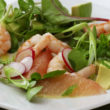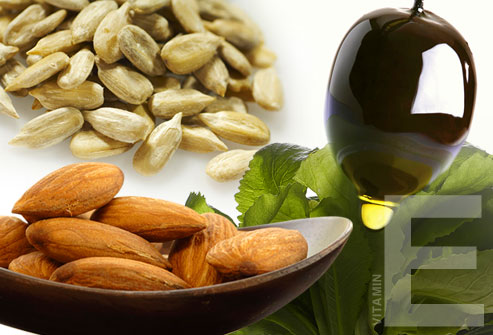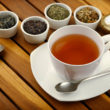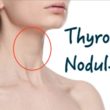Vitamin E is widely known to help make the skin beautiful and young-looking. However, the benefits of this nutrient really go beyond skin-deep, so to speak. One of the 8 fat-soluble vitamins, it is known to help reduce your risk of heart disease by lowering the levels of cholesterol. It is also said to help prevent macular degeneration and cancer. This doesn’t really come as a surprise as vitamin E is a potent antioxidant — it is very good at reducing the impact of free radicals on the cells.
These days, there are many vitamin E supplements on the market which are mainly geared towards men and women who are looking to delay the appearance of various skin aging signs. You may choose to spend top dollar on high quality products, or you may simply regularly consume fods that are naturally rich in the said nutrient. The following are the top 10 sources of vitamin E:
- Sunflower Seeds
Some of the healthiest snacks on the planet are sunflower seeds. Consuming 1/4 cup of them supplies your body with as much as 82% of its recommended dietary allowance of vitamin E. Sunflower seeds are also packed with copper, manganese, selenium, phosphorous, magnesium, and vitamins B1, B3 and B6.
- Almonds
If you love sprinkling almonds on your yogurt or oatmeal, you should not worry about being deficient in vitamin E. That’s because a 1/4-cup serving of almonds provides 40% of your everyday vitamin E needs.
- Spinach
Consuming a cup of spinach allows you to obtain 25% of your everyday vitamin E needs. Another impressive thing about spinach is it contains amazing amounts of vitamin K, a nutrient important for blood clotting and healthy bones. Also supplied by spinach are manganese, folate, magnesium, iron, copper and vitamin A for good eyes.
- Swiss Chards
You can get up to 22% of your daily requirement of vitamin E just by adding a cup of Swiss chards to your diet. Just like spinach, these leafy green vegetables are loaded with a lot of vitamin K. Swiss chards are also wonderful sources of immune-boosting vitamin C and eye-friendly vitamin A, and minerals like magnesium, copper and potassium.
- Avocado
Enjoying a cup of avocado for desserts allows you to get 21% of your daily vitamin E needs. This exotic fruit is also loaded with fiber, copper, folate, potassium, and vitamins B6, C and K.
- Turnip Greens
A cup of turnip greens yields 18% of your everyday requirement of vitamin E. They are also packed with several other vitamins such as A, B1, B3, B6, C and K. Whew!
- Asparagus
Obtaining 18% of your recommended dietary allowance of vitamin E is possible simply by adding a cup of asparagus to your diet. Asparagus is also a wonderful source of vitamin K, folate, copper, selenium, manganese and phosphorous. In addition, it contains vitamin C for healthy skin as well as a strong immune system.
- Broccoli
Consuming a cup of broccoli is enough for you to obtain as much as 15% of your everyday requirement of vitamin E. The nicest thing about broccoli is it’s so rich in sulfuric compounds that help neutralize toxins in your body.
- Chili Peppers
You should not worry about not getting enough vitamin E if you love wolfing down spicy dishes with chili peppers in them. That’s because a couple of teaspoons of them packs 14% of your daily needs of vitamin E. Chili peppers also help accelerate your metabolism, bolster your immune system, as well as fight off pain and inflammation.
- Bell Peppers
A cup of bell peppers yields as much as 10% of your everyday vitamin E needs. What’s more, bell peppers contain superb amounts of vitamin C, a powerful antioxidant that protects your skin from free radical damage and helps make your immune system become stronger.













